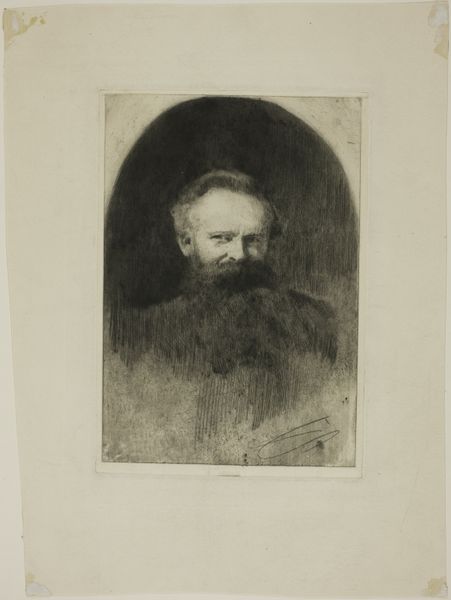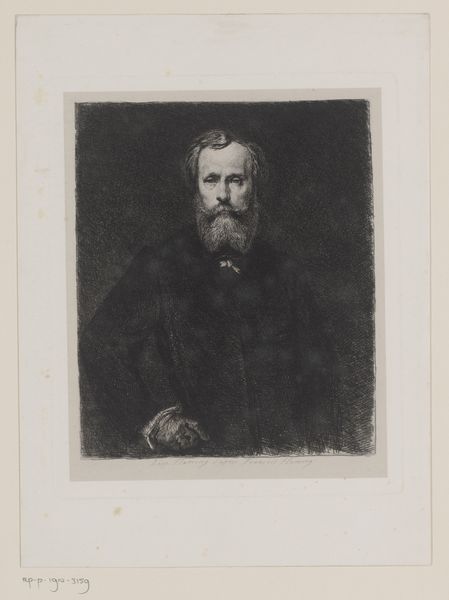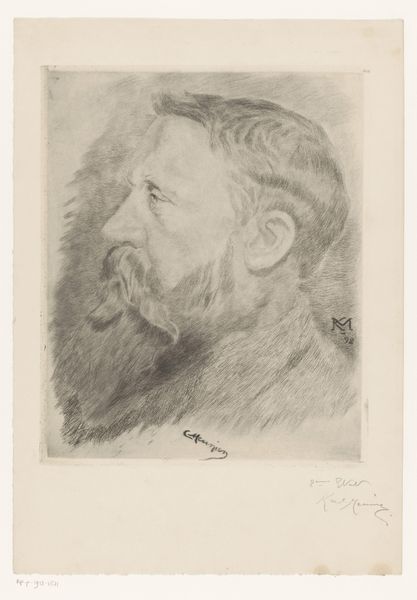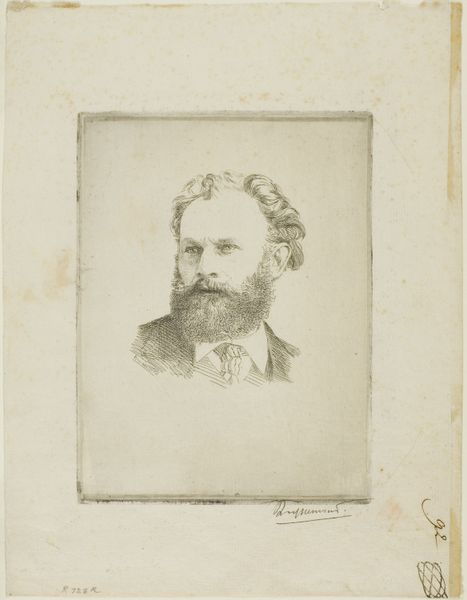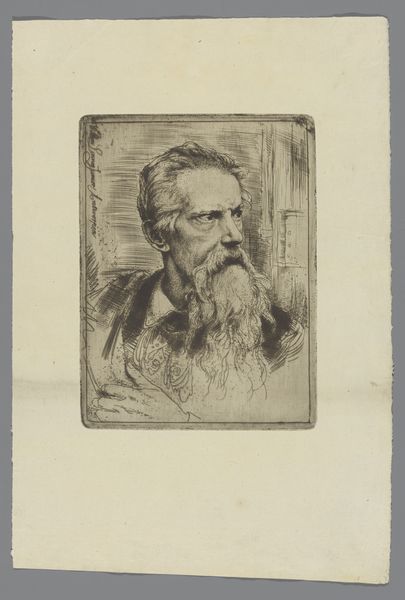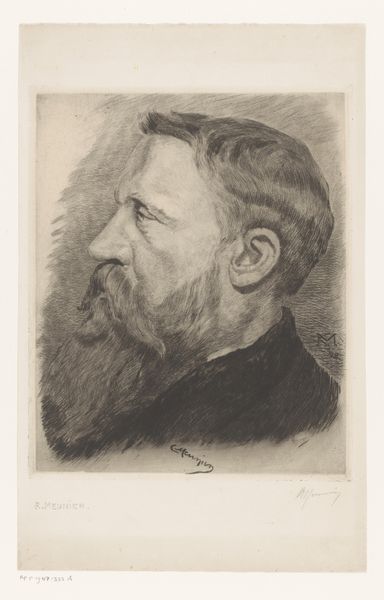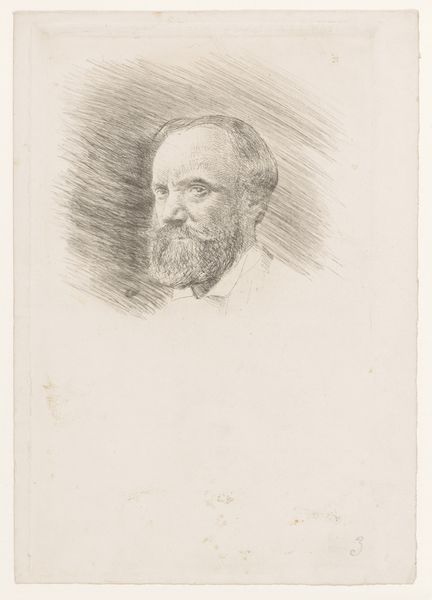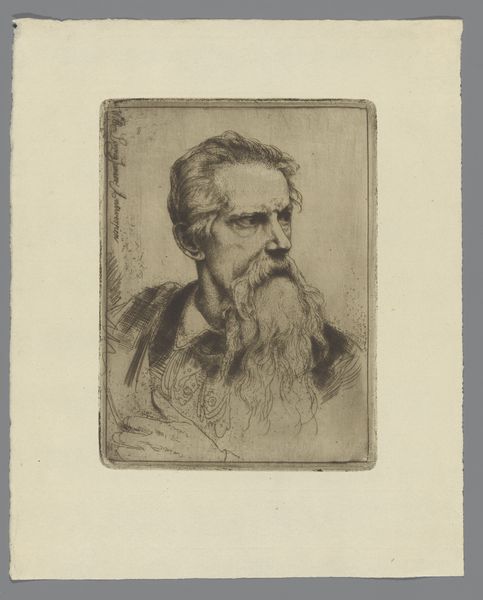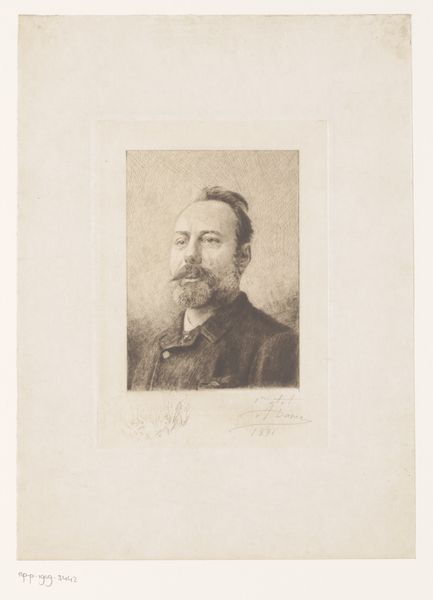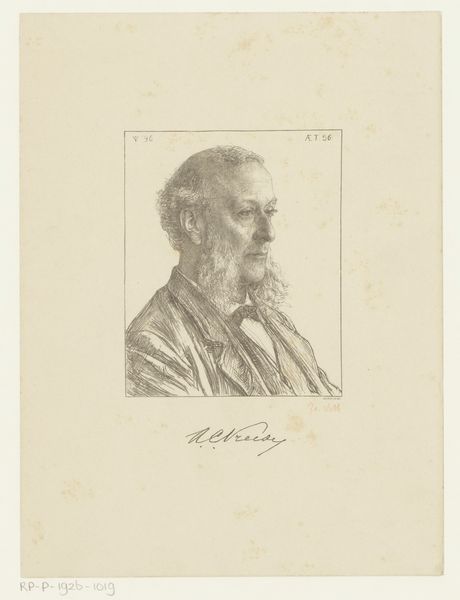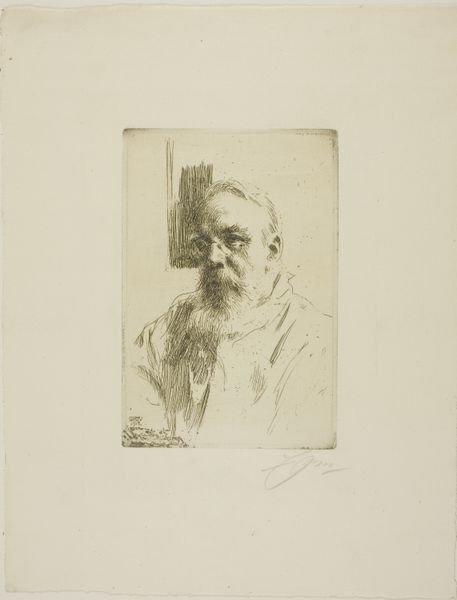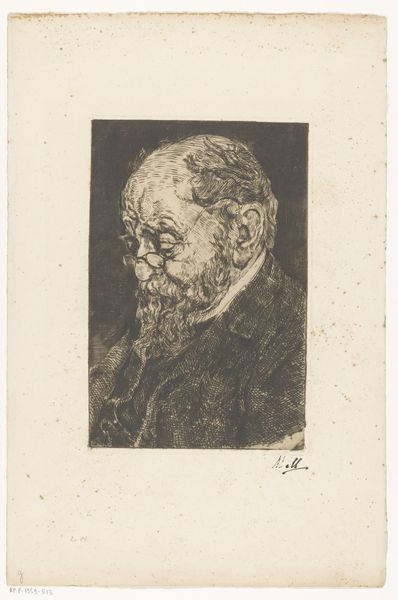
drawing, print, etching, paper
#
drawing
#
toned paper
# print
#
etching
#
pencil sketch
#
charcoal drawing
#
possibly oil pastel
#
paper
#
charcoal art
#
underpainting
#
watercolour illustration
#
tonal art
#
charcoal
#
watercolor
Dimensions: 242 × 169 mm (image); 250 × 176 mm (plate); 390 × 286 mm (sheet)
Copyright: Public Domain
Editor: Anders Zorn's 1882 etching "Axel Herman Haig II," currently residing at the Art Institute of Chicago, strikes me with its direct gaze and somber mood, enhanced by the dark tonality. It's remarkably detailed, especially considering it's a print on paper. What symbolism do you read in this portrait? Curator: The sitter's direct gaze indeed anchors our attention. Beyond a simple portrait, however, consider the beard: in Victorian portraiture, the beard signified wisdom, experience, and masculinity rooted in tradition, consciously hearkening to the artistic forefathers of the Renaissance and beyond. Do you find that connection holding true when you look at Haig's confident yet weathered expression? Editor: Absolutely, I see the historical connection now. It's more than just facial hair; it’s a deliberate statement. The darkness surrounding the figure makes me think of introspection, but perhaps that's too simplistic. Curator: Not at all! The shadowed background pushes the figure forward, inviting us into an intimate, almost confessional space. What does the absence of any identifying background details tell us about Zorn’s priorities? Perhaps he is suggesting something about Haig's role as an artist in himself? Editor: So the lack of context encourages us to focus solely on Haig's character, or the *idea* of Haig represented here? Curator: Precisely. The etching, as a multiple, also democratizes this "idea," allowing wider access to this symbol of artistic authority. What implications might this have had for the aspiring artists of the time? Editor: It's fascinating to think of this portrait as both a personal depiction and a broader cultural statement about artistry. I hadn’t considered how the print medium itself amplifies the meaning. Curator: Indeed. The symbols embedded in this portrait reveal a fascinating interplay between individual identity and collective cultural memory. I appreciate how you saw past the face to see its meanings!
Comments
No comments
Be the first to comment and join the conversation on the ultimate creative platform.
